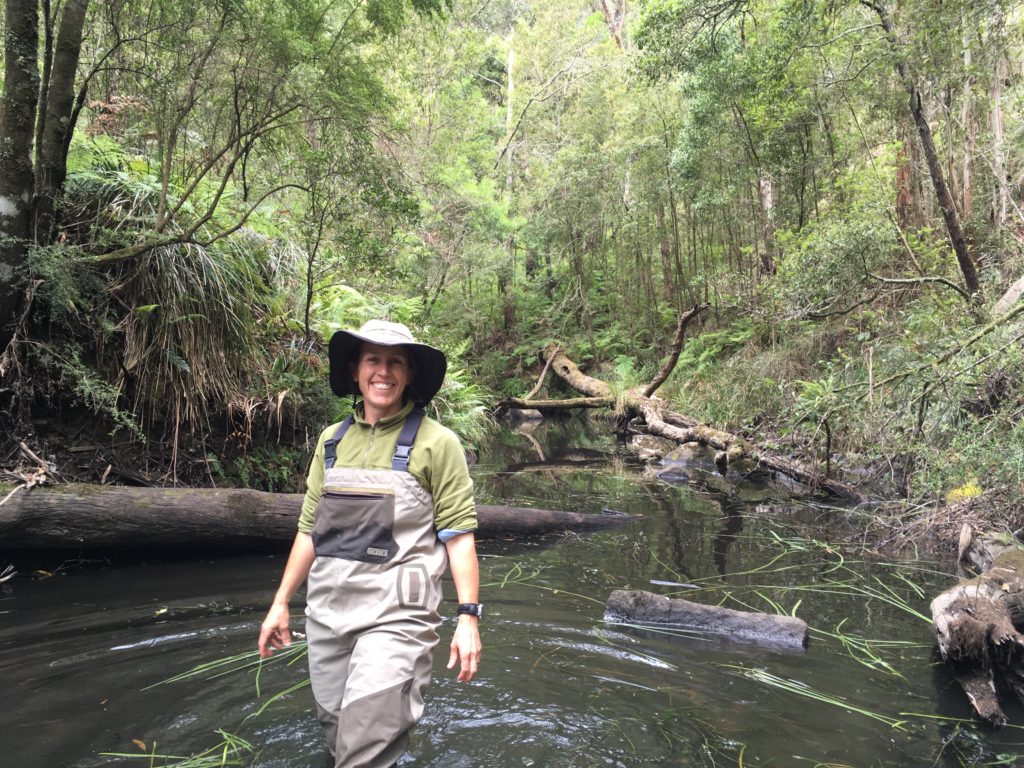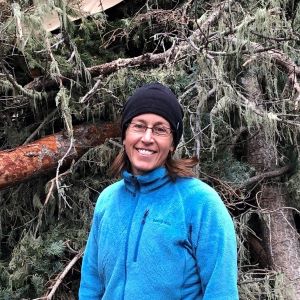Welcome Krista Bonfantine to the Guild
 Written by Krista Bonfantine
Written by Krista Bonfantine
More than twice as much precipitation falls on the Southwest’s highest peaks than the surrounding bottomlands and mountain precipitation is a primary source of groundwater recharge so we need to manage our forests as the water towers that they are. Improved management in upland and riparian ecosystems can maximize the storage of water in the high country and can help make ecosystems more resilient to wildfire. My role at the Guild will add this water lens to the amazing collaborative forest and fire management work that is already taking place within the Rio Chama CFLRP.
Introducing Krista Bonfantine: she is a watershed ecologist who has spent her career connecting water, fire, and people. She holds a Ph.D. in aquatic ecology from Deakin University, a M.S. in Water Resources from the University of New Mexico and a B.S. in Biology from Colorado State University. She became a firefighter as a USFS seasonal more than 20 years ago and has been sharing fire science and helping with the occasional burn ever since. In 2006, Krista founded a consulting company that combined fire and water science with community participation and education. For over a decade she led collaborative teams in water and fire planning, ecological monitoring, and community outreach projects.
Outside of her career as an ecologist, Krista’s passion for supporting New Mexico communities has also propelled her into volunteer service with several water and fire management organizations. She currently serves as the Chair of the Estancia Basin Water Planning Committee and previously spent 12 years on the board of directors for a small water utility in Sandia Park, NM.
 In 2017, Krista and her family moved to Australia for an industry-funded Ph.D. in water management. When academic bias against community science pushed Krista’s water management PhD into molecular biology, she learned how to catalog microscopic communities using DNA and then applied those skills in a postdoc, researching the smoke microbiome in the Kobziar Fire Ecology Lab.
In 2017, Krista and her family moved to Australia for an industry-funded Ph.D. in water management. When academic bias against community science pushed Krista’s water management PhD into molecular biology, she learned how to catalog microscopic communities using DNA and then applied those skills in a postdoc, researching the smoke microbiome in the Kobziar Fire Ecology Lab.
Krista’s PhD research, that spanned from catchment-scale hydrology to microbial community structure, helped prepare her to think about the dizzying array of communities, cycles, and fluxes that interact in the hundreds of subwatersheds that make up the headwaters of the San Juan River, Rio Chama, and Rio Grande. In planning and implementing watershed restoration projects in these basins and others, Krista is applying the principles of ‘heal, hydrate, and hurry’. She is very excited to work with such a talented team to deliver positive outcomes for ecological and human communities.
